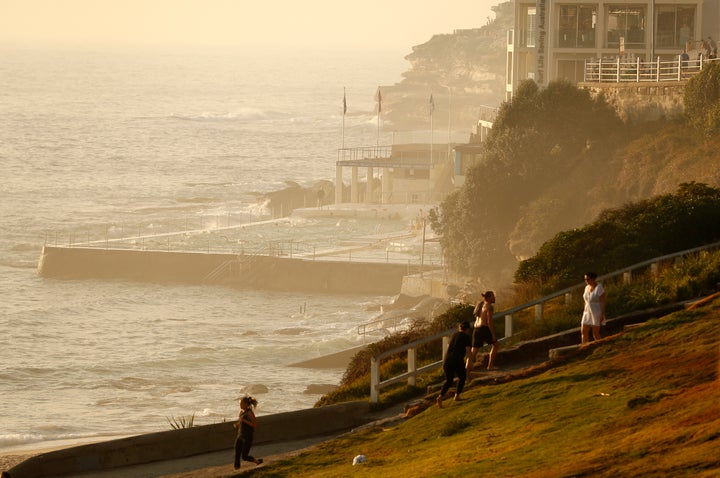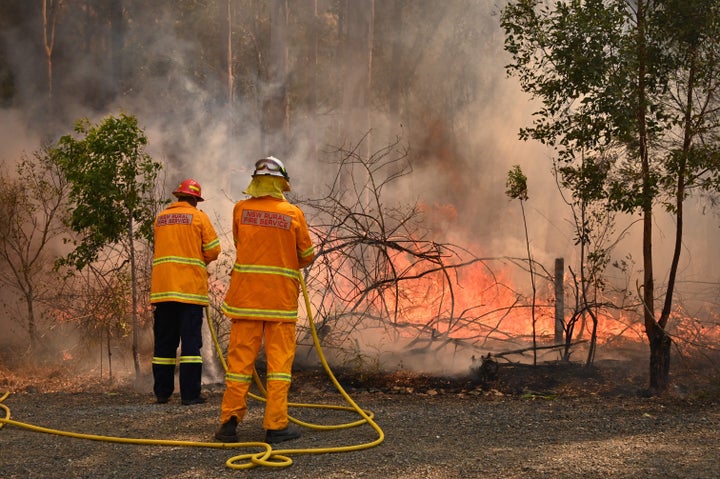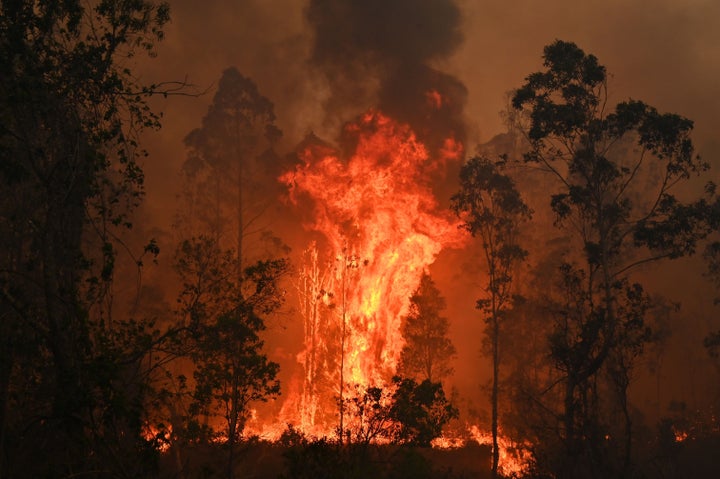SYDNEY — Millions of Sydneysiders woke up Tuesday morning to a city blanketed in smoke as thousands of firefighters up and down Australia’s east coast prepared for potentially catastrophic bushfires.
More than a million acres have already been scorched by a series of fires in both New South Wales and Queensland, which have left at least three people dead and more than 150 homes destroyed.
As of 9 a.m., there were 57 fires burning throughout New South Wales, and fire officials warned the state was on track to “experience the fire conditions predicted,” potentially affecting more than 6 million people. Up north, nearly 1,000 firefighters were battling 55 additional fires in Queensland on Tuesday.

The entire state of New South Wales was under a total fire ban, and parts of the Greater Sydney region were listed under a “catastrophic” fire warning, meaning high temperatures, dry conditions and heavy winds could combine to create devastating blazes.
“Of course, we’ve still got not just the fires that we’re dealing with but the very widespread catastrophic forecast,” Shane Fitzsimmons, the commissioner of the New South Wales Rural Fire Service, said during a news briefing on Tuesday. “We plan for these sorts of days, but we always hope they will never come.”
Fitzsimmons said the entire state was on standby to address any new blazes or a shift in wind that could exacerbate fires already burning. The country’s weather service said such a change was expected later in the evening, with wind gusts topping 50 mph, and the commissioner said the worst was yet to come.
“We’re going to have a long night ahead of us because this southerly [wind] is going to continue through, and those strong winds are not going to get to northern NSW until near midnight,” Fitzsimmons said. “Unfortunately there is no reprieve.”
Hundreds of firefighters were also preparing to travel to the region from neighboring states if needed, and officials were urging residents to heed evacuation orders and get out before conditions became too dire. Those predictions proved true within hours as temperatures spiked in parts of New South Wales, and the rural fire service said it was already too late to flee some areas.


“Not being in bushfire-prone areas is clearly the safest option,” Fitzsimmons said earlier in the day, urging those in potentially dangerous areas to evacuate in anticipation of dangerous blazes.
Exacerbating conditions, the country’s meteorology bureau reported the entire country didn’t have a single drop of rain for a 24-hour period this week. It was the first time that has happened in the country’s recorded history.
“The team can’t comprehensively identify a day in our records where there hasn’t been rain somewhere on continental Australia,” a spokesman for the bureau told a radio station.
The fires have also already deeply affected wildlife. Wildlife advocates said up to 350 koalas living in a nature reserve may have died in a fire last month after two-thirds of their habitat was obliterated.
“We think most of the animals were incinerated ― it’s like a cremation,” Sue Ashton, president of Koala Conservation Australia, told The Sydney Morning Herald. “They have been burnt to ashes in the trees.”
Many officials were comparing this week to the Black Saturday bushfires in 2009, which killed 173 people and destroyed thousands of homes in the state of Victoria.

The blazes have instigated a political debate across the country as some politicians and fire officials began linking a more intense bushfire season to climate change, as scientists have been warning for years. As The Washington Post’s Andrew Freedman noted, “in the climate research literature, the links between a warming climate and increased bush fire risk in Australia are robust and uncontroversial.”
“Fires are burning in places and at intensities never before experienced — rainforests in northern NSW, tropical Queensland, and the formerly wet old-growth forests in Tasmania,” Greg Mullins, a former commissioner for Fire and Rescue NSW, wrote in an op-ed this week. “I’m confident that our national government, when the smoke and dust settles, will finally see the obvious and understand the word ‘unprecedented.’ I’m sure it will then start to take decisive action to tackle the base cause ― greenhouse emissions ― then use the high moral ground to lean on other countries to also do the right thing.”
But those calls have only enraged the country’s conservatives, which have spent recent years vehemently defending Australia’s coal industry. Deputy Prime Minister Michael McCormack accused environmentalists this week of using a tragedy to advance their interests, saying Australia didn’t “need the ravings of some pure, enlightened and woke capital city greenies at this time, when they’re trying to save their homes.”
Also on Tuesday, former Deputy Prime Minister Barnaby Joyce said two people who died in this month’s fires had “most likely” voted for the country’s Greens party.
REAL LIFE. REAL NEWS. REAL VOICES.
Help us tell more of the stories that matter from voices that too often remain unheard.
Credit: Source link